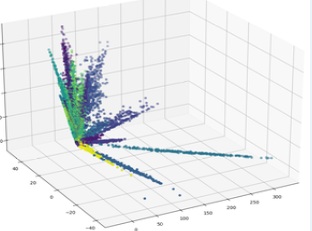- Stephan Johann Lehmler, Muhammad Saif-Ur-Rehman, Ioannis Iossifidis
- Computer Science, Ruhr West University of Applied Science, 45407 Mülheim an der Ruhr, Germany
- Institute for Neural Computation, Ruhr-University Bochum, 44801 Bochum, Germany
Bioelectrical signals gathered via surface electromyography (sEMG) are the basis of muscle-machine-interfaces (MMI), which makes accurate decoding of those signals an important step in aplications such as rehabilitation robotics. A well known issue when dealing with those signals is the strong inter-subject variability, due to various factors including differences in muscle physiology or skin thickness.
In addition, the signal also varies on an intra-subject-level, making frequent recalibration necessary. This is especially a problem for deep learning models, because they tend to overfit easily on little data, due to their large parameter space. This makes quick calibration difficult.
These models should benefit from getting information on subject-specific parameters that are affecting the received signal. As it is not certain which combination of parameters affect model accuracy in which waz, and manually inferring those parameters is not feasible in all situation, we investigate deep featue learning for automatically finding subject discriminating features.
We try to find a low dimensional representration of the sEMG signal by means of training a deep learning architecture with an internal bottleneck layer to discriminate between subjects. To the best of our knowledge, this task has so far not been investigated in the literature. Solving it with high accuracy would open up potential use cases by itself (e.g. multi-user devices). But even with lower discrimination accuracy, the learned representation can be useful for various studies. It can be used to better measure the influence of inter-subject differences on sEMG processing, e.g. evaluate which error might be caused by inter- and which by intrapersonal differences.
We also expect it to help stabilize other deep learning models for sEMG if the learned subject-features are used as additional input to the raw sEMG signal.
Acknowledgements
This work is supported by the Ministry of Economics, Innovation, Digitization and Energy of the State of North Rhine-Westphalia and the European Union, grants GE-2-2-023A (REXO) and IT-2-2-023 (VAFES)

